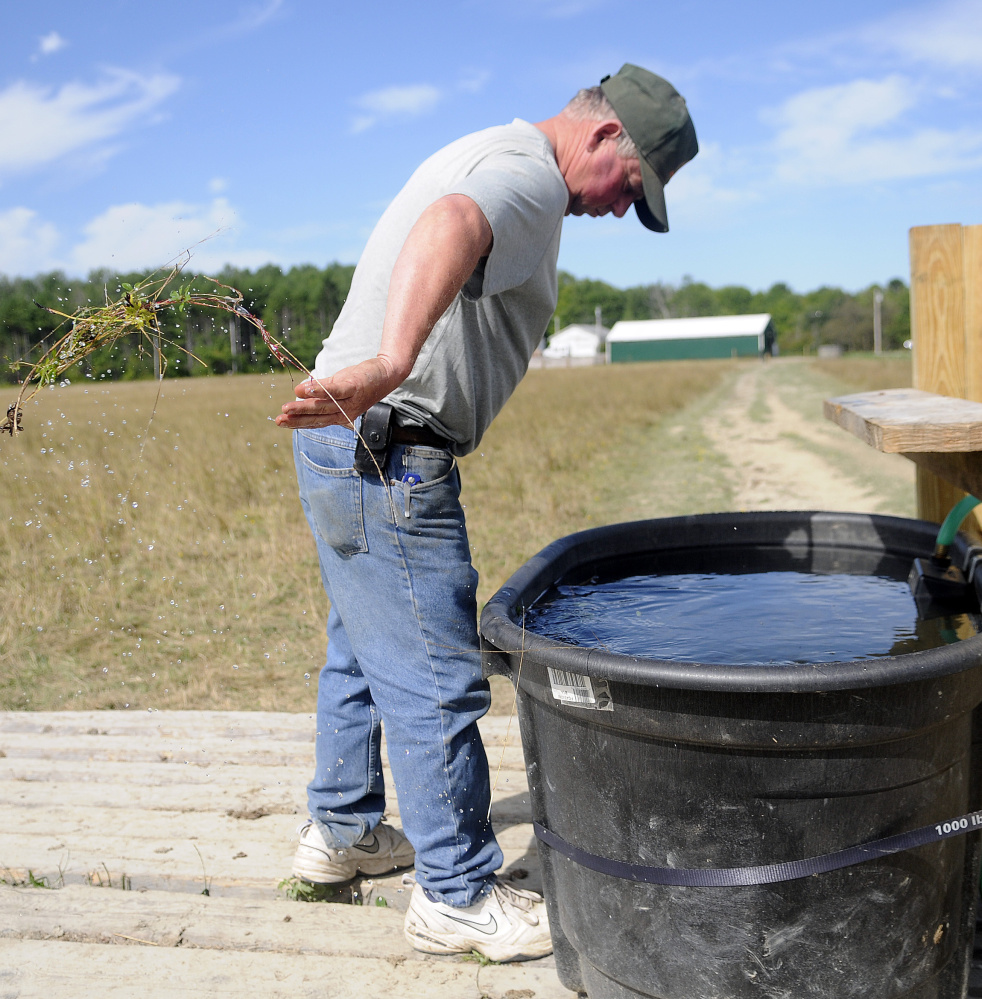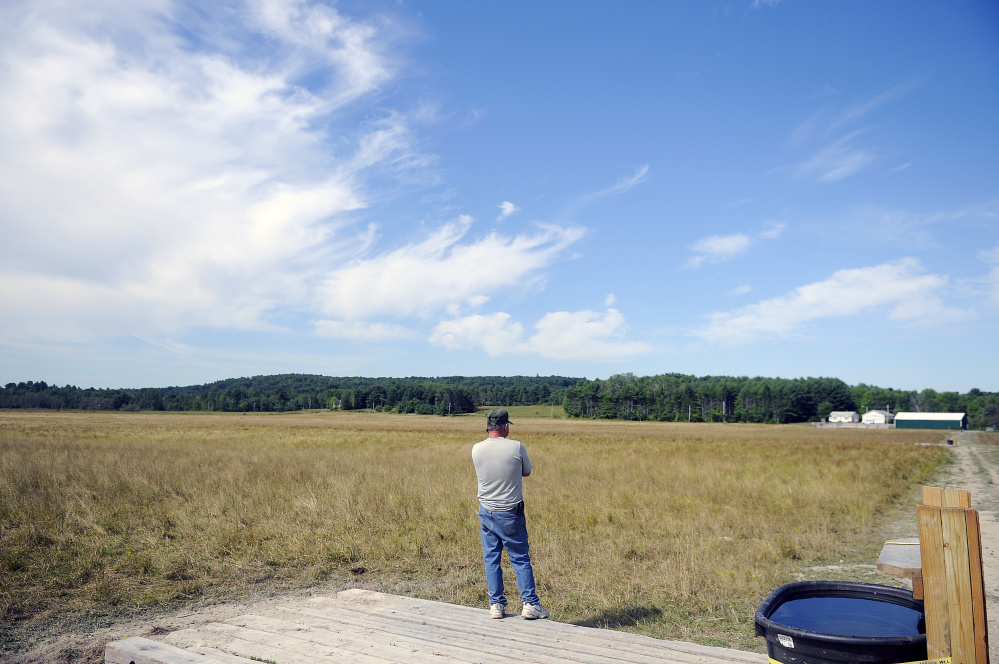Farmers in southern and central Maine are struggling with dry conditions that have affected livestock and hay production this summer.
Pete Kelley of Kelley Bros. Farm in Pittston said the spring that provided water to his cattle herd went dry earlier this summer, forcing him to run a hose 2,100 feet from his well to a tub to provide water for the animals.
Conditions range from “abnormally dry” in much of Kennebec County to “severe drought” in parts of York and Cumberland counties, according to the U.S. Drought Monitor’s website. The northern part of the state has had more rain this summer.
Kelley and other farmers say the dry conditions have also affected their hay crops.
“The first crop was pretty good, but the second hay crop is way down,” Kelley said. “We usually get about 300 bales of hay in our second crop, but I’ll be lucky if I get 100 bales this year.”
Scott Herrick of Hornbeam Mountain Farm in Mount Vernon said his second crop was down as well.
“Normally, I’d see a 50 percent drop from the first crop to the second crop on one particular field,” Herrick said. “On this field, I got 600 bales with the first crop and just 128 the second time. It’s almost cost-prohibitive when you factor in labor and fuel costs.”
Herrick said his losses from the subpar harvest could be $4,000 to $5,000.
Hay crops have been affected in much of the state, said Richard Kersbergen, a professor in the sustainable dairy and forage systems field at the University of Maine Cooperative Extension.
“In certain parts of the state, the second and third crop of hay is either substantially reduced or nonexistent,” he said. “This is one of the drier years I’ve ever seen, and I’ve seen estimates ranging from 25 to 75 percent less than previous years.”
One of the challenges farmers face, Kersbergen said, is that if they don’t have enough hay to feed their animals for the winter, they are forced to buy hay out of state because most other farms in Maine are having the same problems.
“But what if they go to New York or somewhere else in New England that is also experiencing similar conditions?” he said. “It’s an out-of-pocket expense, and you can’t guarantee the quality of the hay you’d be buying.”
Alicyn Smart, executive director of the Maine Farm Bureau, said farmers aren’t the first ones to seek help, so she isn’t sure how many are struggling because of the drought.
“What I have been hearing the most is how draining this has been on the farmers,” she said. “It takes a lot of work, and it’s not easy to prepare for.”
Earlier this month, the State Drought Task Force convened for the first time since 2002 because of “significant drought conditions” throughout the southern two-thirds of the state. Officials then said conditions were expected to get worse, and they have.
“If we don’t get anything from these tropical systems to the south, we won’t get much of anything at least through next week,” said Michael Cempa, a meteorologist at the National Weather Service in Gray. “It’s bad, but I think it could be worse.”
Meteorologists are tracking Tropical Storm Hermine, which is expected to hit Florida on Thursday before heading north along the East Coast. It’s not clear yet whether Maine will get any rain from the storm.
According to Tom Hawley of the weather service, southern parts of the state, especially York County, have experienced the largest departures from normal rainfall since April 1. Sanford has had 9.13 inches less rain through the middle of August, and rainfall in Eliot is down by 7.95 inches.
Send questions/comments to the editors.




Success. Please wait for the page to reload. If the page does not reload within 5 seconds, please refresh the page.
Enter your email and password to access comments.
Hi, to comment on stories you must . This profile is in addition to your subscription and website login.
Already have a commenting profile? .
Invalid username/password.
Please check your email to confirm and complete your registration.
Only subscribers are eligible to post comments. Please subscribe or login first for digital access. Here’s why.
Use the form below to reset your password. When you've submitted your account email, we will send an email with a reset code.